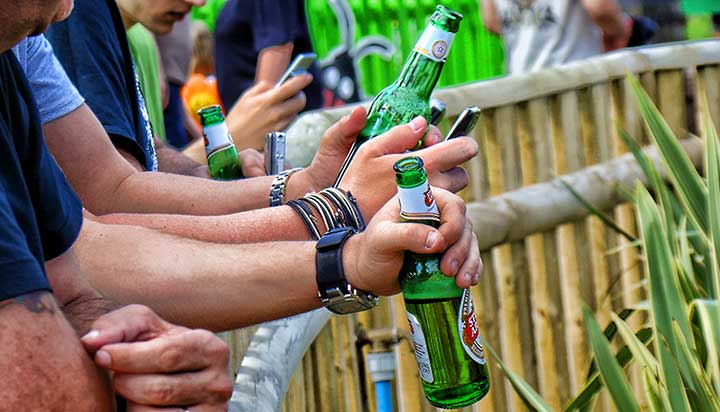A new study found that men who have sex with men (MSM)—defined as gay and bisexually identified men as well as heterosexually identified men who had same-sex partners–reported equal or lower levels of hazardous drinking than exclusively heterosexual men. This finding dispels the popular assumption that men who have sex with men are more likely to consume alcohol above recommended amounts. The study results also suggest that the protective effect is enhanced for some racial/ethnic groups. Black MSM, for instance, reported a lower likelihood of binge drinking or heavy weekly drinking compared to both heterosexual Black and White men. Latino MSM, however, were more likely to report heavy weekly drinking than their heterosexual Latino peers but had similar risks of binge drinking and heavy daily drinking.
Using data from the 2004-2005 National Epidemiologic Survey on Alcohol and Related Conditions (NESARC), the study looked at over 9,900 men from across the United States and their self-reported responses to questions on alcohol use in the past year. The study defined hazardous drinking for men as drinking more than two drinks per day (heavy daily drinking), more than 14 drinks per week (heavy weekly drinking), or five or more drinks within a two-hour period (binge drinking).
“Our findings challenge the ‘double jeopardy hypothesis,’ which proposes that multiple disadvantaged statuses always lead to poorer health outcomes,” said ARG lead researcher and Associate Scientist, Paul Gilbert. “In particular, we found that Black MSM were much less likely to drink to excess, but what protects these men is not yet known.”
Because the risk of heavy drinking was shaped jointly by race/ethnicity and sexual orientation, Gilbert and colleagues say that future studies should include both when assessing drinking outcomes, something that most research to-date has failed to do. “Taking both factors into account may reveal differences within a particular group,” Gilbert says. “If studies aren’t looking at both race and sexuality, they may not be getting a true picture of men’s drinking.”
Gilbert also calls for further investigation across all racial/ethnic groups to determine why differences in drinking occur.
Support for this paper was provided in part by grants from the National Institutes of Health (NIH).
Reference: Gilbert PA, Daniel-Ulloa J, Conron K. Does comparing alcohol use along a single dimension obscure within-group differences? Investigating men’s hazardous drinking by sexual orientation and race/ethnicity. Drug and Alcohol Dependence (2015). DOI: 10.1016/j.drugalcdep.2015.03.010 Get the abstract and full text.






